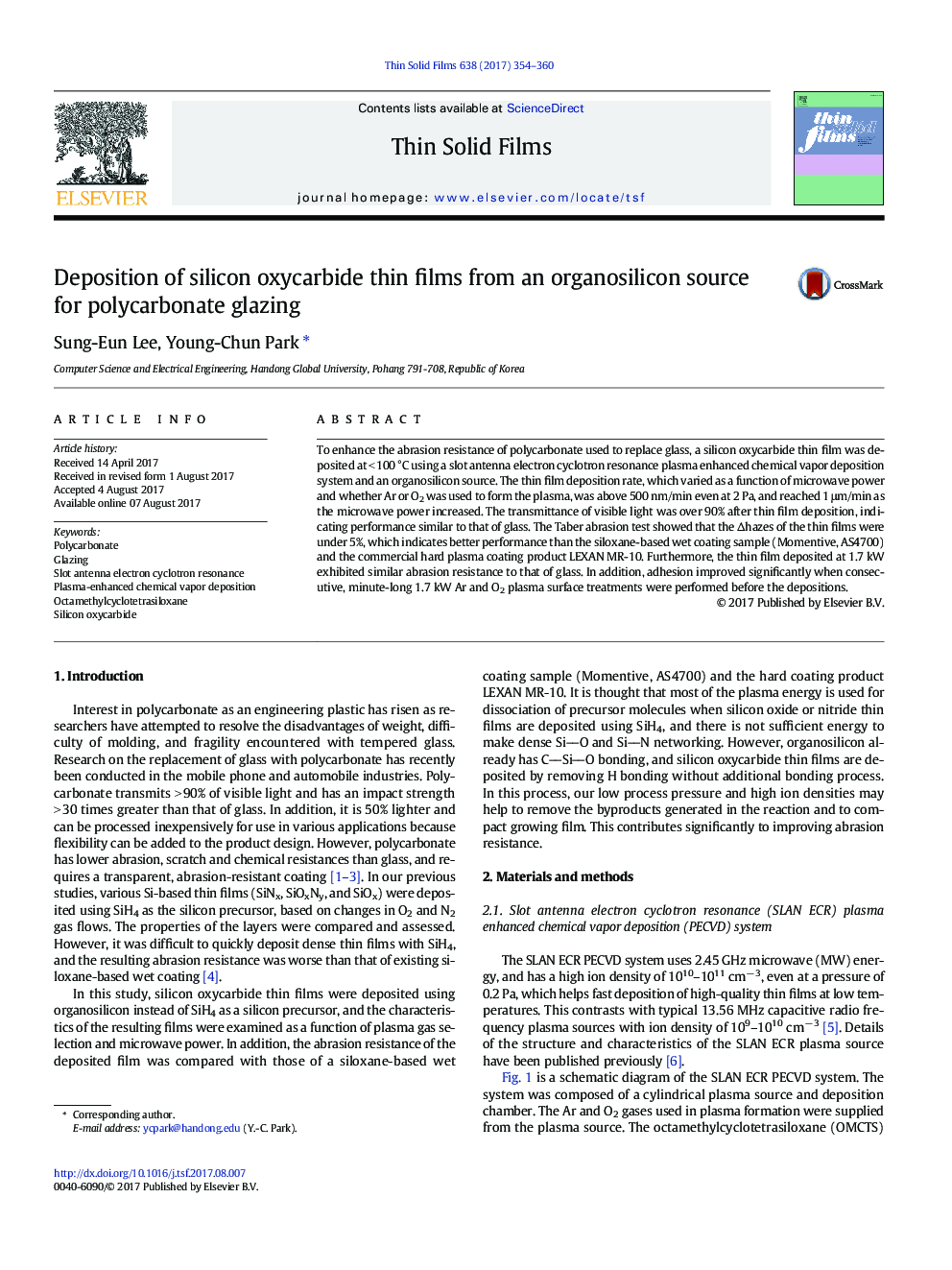| Article ID | Journal | Published Year | Pages | File Type |
|---|---|---|---|---|
| 5465870 | Thin Solid Films | 2017 | 7 Pages |
Abstract
To enhance the abrasion resistance of polycarbonate used to replace glass, a silicon oxycarbide thin film was deposited at < 100 °C using a slot antenna electron cyclotron resonance plasma enhanced chemical vapor deposition system and an organosilicon source. The thin film deposition rate, which varied as a function of microwave power and whether Ar or O2 was used to form the plasma, was above 500 nm/min even at 2 Pa, and reached 1 μm/min as the microwave power increased. The transmittance of visible light was over 90% after thin film deposition, indicating performance similar to that of glass. The Taber abrasion test showed that the Îhazes of the thin films were under 5%, which indicates better performance than the siloxane-based wet coating sample (Momentive, AS4700) and the commercial hard plasma coating product LEXAN MR-10. Furthermore, the thin film deposited at 1.7 kW exhibited similar abrasion resistance to that of glass. In addition, adhesion improved significantly when consecutive, minute-long 1.7 kW Ar and O2 plasma surface treatments were performed before the depositions.
Keywords
Related Topics
Physical Sciences and Engineering
Materials Science
Nanotechnology
Authors
Sung-Eun Lee, Young-Chun Park,
